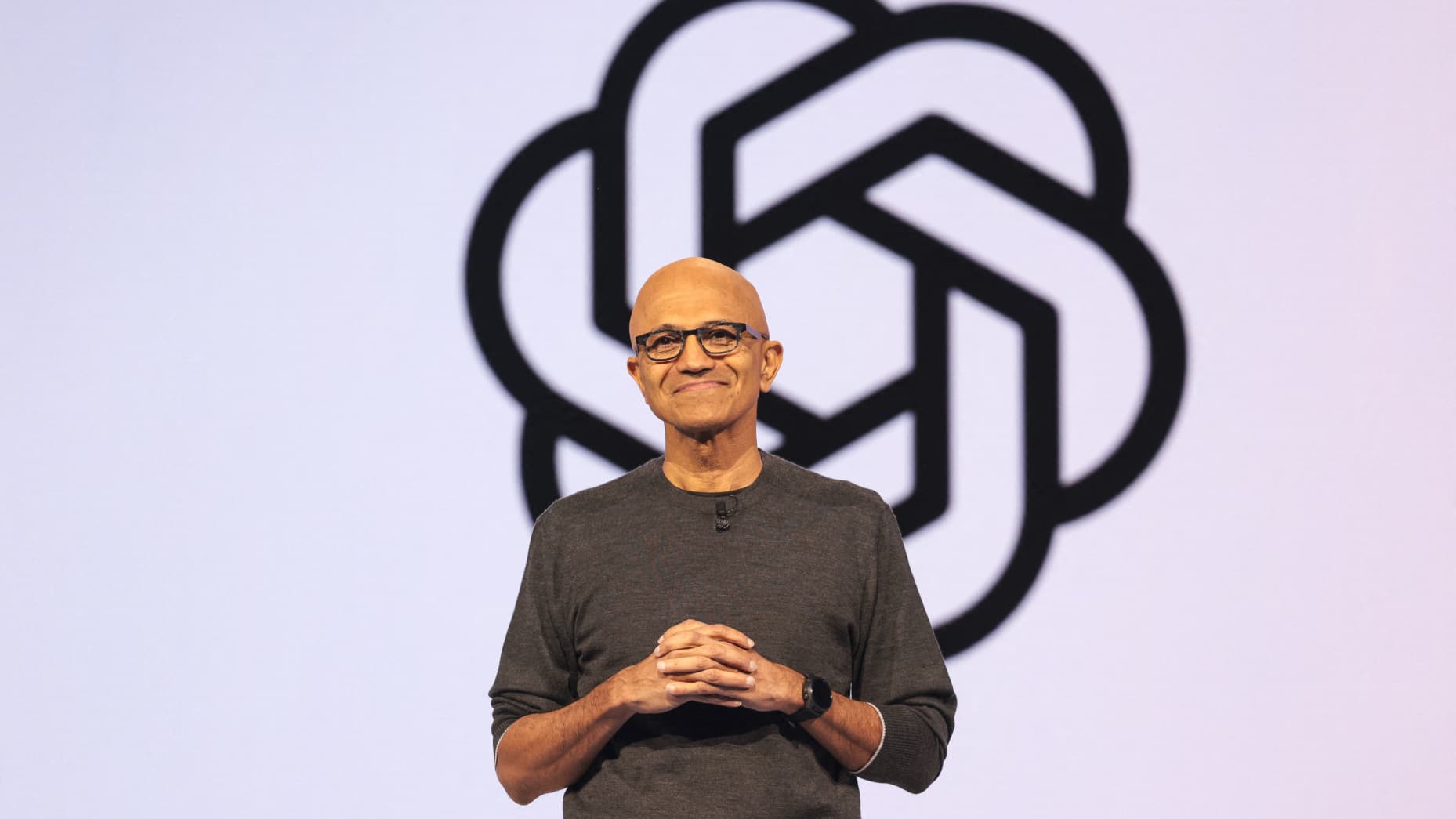Venmo is accelerating its transformation from a simple peer-to-peer payments app into a comprehensive consumer-fintech platform. The PayPal-owned service announced a slate of updates designed to broaden how everyday shoppers use Venmo, moving beyond splitting bills and gifts to enabling broader, on-the-spot spending across in-store and online channels. The moves come as Venmo prepares to compete more aggressively for a larger slice of the consumer wallet, improve monetization of its user base, and deepen integration with merchants and brands. With more than 64 million monthly active users, Venmo is betting that a richer set of rewards, expanded checkout options, and a stronger brand narrative will translate into higher usage and increased share of consumer spending. The changes reflect PayPal’s broader strategy to leverage Venmo, along with its other assets, to drive growth in a crowded fintech landscape.
Strategic shift: From a payments app to a full-service commerce experience
Venmo’s latest updates mark a deliberate strategy to expand beyond the core peer-to-peer (P2P) transfers that defined the app for years. Executives describe the evolution as a move toward a complete commerce experience that lets users spend their Venmo balance wherever they shop—whether in physical stores or online. This shift is summarized by Diego Scotti, PayPal’s executive vice president and general manager of the Consumer Group, who emphasized that Venmo is being reimagined as a “full-service commerce experience” rather than a standalone payments tool. The aim is to capture more everyday wallet share by integrating Venmo deeper into the shopping journey and linking the balance to broader consumer spending decisions. In this context, Venmo’s strategy aligns with a broader industry trend where fintech platforms seek to become the default or preferred payment method across a wide range of purchase environments, not just within the confines of a person-to-person transfer.
The move also reflects the competitive pressure from peers that have already embedded broader financial services into consumer workflows. Cash App, for instance, has gained traction by expanding beyond person-to-person payments into debit services, investing in merchant partnerships and broader spending capabilities. Zelle, a rapidly growing competitor in the P2P space, has also influenced the field by pushing large-scale network effects. Against this backdrop, Venmo’s update cycle aims to close the gap with rivals by delivering enhanced rewards, more flexible checkout options, and a compelling brand narrative that positions Venmo as essential for daily commerce. The company argues that by enabling users to spend their Venmo balances more freely and rewardingly—with real value and simple, mobile-first experiences—Venmo can capture a larger portion of ordinary consumer transactions, both online and in stores.
From a macro perspective, the shift represents PayPal’s broader ambition to optimize the value chain around consumer payments. By betting on Venmo as a central node in a multi-channel commerce ecosystem, PayPal seeks to maximize the lifetime value of Venmo users and cross-sell other PayPal services and merchant solutions. The benefits of this approach are intended to be visible in several metrics, including higher total payment volume, stronger debit-card adoption signals, and increased merchant participation. While the path to broader adoption may be gradual and contingent on continued improvements and user trust, Venmo’s leadership is betting that deeper merchant integration, a richer rewards platform, and a more recognizable brand proposition will drive sustained growth.
Enhanced Venmo Debit Card rewards and features
A core pillar of Venmo’s expansion is the enhanced rewards available through the Venmo Debit Mastercard. The revamped card program features a new tier of incentives designed to drive higher everyday spend on key consumer categories. One standout element is the introduction of 15% cash back at major retailers, with offers activated directly in the Venmo app. This cashback rate is designed to attract frequent shoppers at prominent names such as Sephora, Walmart, Lyft, McDonald’s, and Walgreens, reinforcing Venmo’s appeal for routine purchases across multiple shopping contexts. The emphasis on activation within the app underscores Venmo’s intent to create an integrated, frictionless experience where rewards are tied directly to the user’s in-app workflow.
In addition to the enhanced rewards, Venmo Debit Card holders gain several practical conveniences. They can use tap-to-pay in stores via mobile wallets, enabling quick, contactless transactions that align with modern consumer expectations for speed and ease. The card also offers the ability to make purchases internationally without foreign transaction fees, broadening its utility for travelers and cross-border buyers. Auto-reload functionality is another highlighted feature, allowing users to maintain sufficient balances automatically, reducing the likelihood of failed payments and promoting smooth checkout experiences. These features collectively aim to elevate Venmo Debit as a versatile, reward-rich instrument that supports everyday spending—both domestically and abroad.
The broader implication is that Venmo is betting that higher-value, reward-rich debit experiences will promote greater card penetration among its user base. Historically, Venmo’s debit card penetration has been exceedingly low, a challenge relative to Cash App’s broader pervasiveness. Bernstein has highlighted that Venmo’s debit card penetration remains in the single digits, while Cash App’s debit penetration has reached around 44%. By offering attractive cash-back and stronger in-app integration, Venmo hopes to spur broader adoption and increase the life-time value of debit card users. The strategic objective is clear: convert more Venmo users into active debit card users and deepen the relationship by tying rewards to everyday purchases, thereby driving higher transaction volumes and more frequent engagement.
Expanded checkout options at major retailers
Venmo is expanding the reach of its checkout capabilities with a growing roster of merchant partners. Major brands and retailers are now enabling Venmo as a payment option at checkout, reinforcing the platform’s positioning as an everyday-financing solution rather than a purely peer-to-peer tool. This expansion includes continued integration with existing partners and the onboarding of new brands to enhance the utility of Venmo in consumer spending. The strategy is to create a more seamless and widely accepted checkout flow that aligns with how people shop across channels, whether through e-commerce sites, mobile apps, or in-store experiences.
The breadth of partnerships is notable. Venmo has integrated at checkout with well-known consumer brands, helping to cement its status as a convenient payment method for everyday purchases. The expanding merchant network is intended to embed Venmo more deeply into the consumer shopping routine, reducing friction for users who prefer Venmo for everyday transactions and want a consistent, trusted payment experience across multiple retailers. By broadening the merchant ecosystem, Venmo aims to move beyond being one of several digital wallets to becoming a primary choice for paying in a wide array of shopping contexts, supporting both online and offline transactions with speed and simplicity.
This expansion also supports Venmo’s broader objective of improving monetization by increasing transaction volume across the ecosystem. As more brands accept Venmo at checkout, the potential for increased interchange revenue, merchant partnerships, and cross-sell opportunities grows. In practice, this means a more compelling value proposition for Venmo users who want to use one wallet across a diverse set of purchasing experiences, from daily essentials to discretionary spend. The combination of elevated rewards, broader acceptance, and a consistent checkout experience is designed to make Venmo not only a convenient option but a preferred one for many shoppers.
Brand campaign and positioning as a full-service commerce platform
To accompany the product updates, Venmo is launching a brand campaign aimed at reshaping how people perceive the app. The messaging centers on Venmo’s evolution into a full-service commerce platform, one that enables users to spend their balances on a wide array of purchases, both in-store and online. The campaign reinforces the idea that Venmo is no longer just about moving money between friends; it is a comprehensive financial tool that sits at the center of everyday transactions. This branding shift is intended to improve recognition and credibility among a broad audience, including younger, mobile-first consumers who are central to Venmo’s growth ambitions.
The new positioning is designed to align with the practical realities of contemporary shopping, where consumers expect simple, fast, and rewarding experiences. By emphasizing full-service capabilities, Venmo aims to attract users who want a single wallet that can handle payments across diverse channels without switching apps or payment methods. The brand narrative also reinforces Venmo’s social roots and community ethos, leveraging its existing brand equity to drive adoption and loyalty. In combination with the broader product updates, the brand campaign is a deliberate attempt to create a cohesive, multi-faceted value proposition that resonates with users who require convenience, rewards, and seamless integration across digital and physical shopping environments.
The strategic emphasis on branding complements the concrete product enhancements by providing a clearer articulation of Venmo’s goals and benefits. This alignment is intended to help users understand why Venmo should be their preferred payment method beyond peer-to-peer transfers. It also supports merchant relationships by delivering a clear message about Venmo’s role in everyday spending and loyalty-building potential. The campaign is part of a broader effort to ensure Venmo remains top-of-wallet for a large, diverse user base while continuing to innovate on features that drive meaningful, measurable engagement and growth.
Key performance indicators: Revenue, volume, and user momentum
From a financial and usage perspective, Venmo’s performance is tracking alongside the broader PayPal ecosystem’s strategic ambitions. Revenue for PayPal’s family of services grew 20% year over year, though PayPal did not disclose a standalone dollar figure for Venmo. Total payment volume (TPV) for Venmo rose by 10% to reach $75.9 billion, reflecting increased transaction activity across both person-to-person and merchant-enabled payments. The transaction volume for Pay with Venmo grew by 50%, indicating stronger consumer uptake of Venmo-powered checkout in partner environments and across integrated merchant experiences. In addition, the monthly active users of the Venmo debit card rose by about 40%, signaling growing adoption of the debit product alongside the broader expansion of Venmo’s checkout capabilities.
PayPal chief executive officer Alex Chriss highlighted that monetization of strategic acquisitions—such as Braintree and Venmo—remains a top priority. The company has been actively pursuing ways to extract greater value from these platforms through enhanced merchant integrations, improved checkout experiences, and more robust consumer engagement. On the merchant side, major brands including DoorDash, Starbucks, and Ticketmaster now accept Venmo at checkout, a development that reinforces Venmo’s role within daily consumer spending. The revenue and usage momentum signals are consistent with the company’s broader ambitions to deepen Venmo’s presence across the consumer economy while leveraging the synergies of its broader PayPal ecosystem.
In the broader payments landscape, Venmo and Cash App have faced competitive pressure from Zelle, which has gained market share in U.S. peer-to-peer payments. Zelle’s share increased to 66% of market volume, up from 55% in 2019, signaling a shift toward a more centralized P2P network with large financial institution backing. In contrast, Venmo’s share stood at 19%, down from 21% the previous year, reflecting the ongoing need to innovate and expand beyond simple transfers to maintain growth momentum. These dynamics underscore the importance of Venmo’s expanded feature set, merchant partnerships, and enhanced rewards in driving broader adoption and transaction volume.
Moreover, Venmo’s brand leverage and social roots are being positioned as advantages in rallying younger, mobile-first consumers who may prefer Venmo as a familiar, trusted payment companion for everyday purchases. The combination of an enriched debit card program, wider checkout acceptance, and a brand narrative that resonates with a digitally native audience is designed to foster increased loyalty and regular usage. These momentum indicators, while not released in isolation for Venmo alone, point to a concerted strategy to convert brand affinity and social familiarity into measurable increases in transaction volumes and platform engagement.
Competitive landscape: market share dynamics and positioning
The competitive dynamics in the U.S. peer-to-peer payments space are evolving rapidly. Zelle’s rapid growth, backed by major banks, has reshaped the landscape by carving out a dominant share of market volume. Venmo and Cash App, both of which compete to be the default P2P tool for many consumers, have seen their respective shares dip as Zelle’s network effects expand. The 66% share attributed to Zelle reflects the broad adoption of the platform among traditional banks and its growing convenience for transfers between bank accounts. Venmo’s decline to a 19% share, from 21% the prior year, illustrates the ongoing challenge of maintaining share in a dynamic, competitive market where customers respond to network effects, ease of use, and perceived value.
Cash App, a close competitor on the consumer spending front, has historically enjoyed strong debit-card momentum and rewards but faces its own challenges in sustaining growth at scale and expanding merchant acceptance. The broader market shift toward integrated merchant checkout experiences underscores why Venmo’s expansion into merchant-enabled spending and enhanced debit rewards is vital. As payments evolve, the ability to offer a seamless, reward-rich experience across multiple purchase contexts becomes a key differentiator. Venmo’s strategy to broaden merchant acceptance, upgrade rewards, and amplify the platform’s role in everyday commerce is explicitly aimed at restoring and expanding its share in an increasingly competitive environment.
The competitive tone underscores why Venmo’s leadership continues to emphasize the value proposition of a unified, convenient wallet that can handle everyday transactions across a wide range of merchants. The emphasis on in-app activation for rewards, tap-to-pay capabilities, and the international-use flag for the debit card are all components designed to deliver a smoother user experience that can convert occasional users into regular, rewarded customers. In this sense, Venmo’s push to become a full-service commerce platform is a strategic effort to safeguard market position by differentiating on integrated features, merchant reach, and compelling rewards rather than relying solely on P2P transfers.
Merchant network, monetization, and strategic partnerships
A central thrust of Venmo’s expansion is its focus on monetizing acquisitions and expanding the network of merchants that accept Venmo at checkout. PayPal’s management has highlighted that major brands—including DoorDash, Starbucks, and Ticketmaster—now enable Venmo at checkout, reinforcing the app’s integration with daily consumer spending. This network expansion helps to normalize Venmo as a standard payment option across a variety of purchase scenarios, increasing the likelihood that users will select Venmo when completing a purchase. With a broader merchant base, Venmo’s ability to drive interchange revenue and cross-sell PayPal’s broader services is enhanced, creating more opportunities for monetization through merchant partnerships and enhanced checkout experiences.
Executive commentary from CEO Alex Chriss emphasizes the importance of optimizing monetization from strategic acquisitions like Braintree and Venmo. By leveraging these platforms, PayPal aims to deepen consumer engagement and improve the economics of each transaction by capturing more value at the point of sale. The implication for merchants is clear: accepting Venmo can drive incremental sales, broaden exposure to a core, highly engaged user demographic, and align with consumer expectations for quick, app-driven payments. In this sense, Venmo’s merchant-driven expansion is not only about convenience—it is a deliberate effort to build a scalable, valuable payments ecosystem for both buyers and sellers.
The expanded merchant network also serves the broader objective of intensifying Venmo’s role as a preferred checkout method. As more brands offer Venmo at checkout, the user experience becomes more cohesive and familiar, encouraging repeated use. The ultimate effect is to convert Venmo into a go-to method for everyday commerce, from food delivery to fashion and entertainment purchases. When combined with the boosted rewards, the expanded merchant reach, and the seamless tap-to-pay capabilities, Venmo’s value proposition strengthens for users who desire an integrated financial tool capable of supporting a wide range of purchases.
Checkout experience expansion: TikTok Shop, Uber, Instacart, Domino’s
Venmo’s expansion into new checkout experiences is a deliberate effort to diversify where and how users can pay with Venmo. The ability to pay with Venmo at high-traffic platforms such as TikTok Shop, Uber, Instacart, and Domino’s marks a significant broadening of Venmo’s checkout footprint. This expansion is designed to meet users where they shop and consume, reinforcing Venmo’s position as a universal wallet for everyday purchases. By enabling Venmo at these platforms, Venmo taps into a range of shopping contexts—from social commerce and ride-hailing to grocery delivery and quick-service dining—where consumers frequently make purchases and seek streamlined payment options.
The strategic rationale behind this network expansion goes beyond mere convenience. It creates a cohesive shopping experience in which users can complete purchases across diverse channels with a familiar payment method. This cross-platform integration is intended to strengthen habit formation—users who frequently use Venmo for one category may continue to rely on Venmo for other categories as well. The result is a more integrated ecosystem in which Venmo serves as the central payment instrument across a broad spectrum of services and retailers. The company’s aim is to entrench Venmo as a go-to payment method during moments of everyday decision-making about what to buy, where to buy, and how to pay, thereby increasing acceptance, usage frequency, and overall spend.
User experience and feature set: Tap-to-pay, international use, and auto-reload
In addition to expanding where Venmo can be used, the product update emphasizes user-friendly features that improve the checkout experience. Tap-to-pay support in stores enables faster, contactless transactions, a capability closely aligned with consumer expectations for speed and convenience. For travelers and international shoppers, the ability to make purchases abroad without foreign transaction fees broadens Venmo’s appeal beyond domestic use, inviting more diverse usage scenarios. Auto-reload functionality adds a layer of convenience by ensuring balances stay funded without manual intervention, reducing friction during checkout and improving checkout success rates.
These features collectively are designed to deliver a smoother, more reliable user experience. The tap-to-pay capability, in particular, helps Venmo compete more effectively in physical retail environments where contactless payments have become the norm. International use and absence of foreign transaction fees remove common barriers to global purchases, widening Venmo’s potential user base to include travelers and cross-border shoppers. Auto-reload reduces the cognitive load for users who rely on Venmo for day-to-day spending, supporting consistent usage and higher trust in the platform. Together, these capabilities create a more cohesive, user-centric experience that aligns with modern consumer behaviors.
The combination of enhanced rewards, expanded merchant acceptance, and an improved user experience is designed to drive higher engagement and greater retention. By delivering tangible benefits—such as higher cashback, easier in-store payments, and seamless cross-border usage—Venmo aims to convert more users into active debit-card holders and to deepen the overall value proposition of the Venmo ecosystem.
The road ahead: Opportunities, risks, and strategic priorities
Venmo’s advances position the company for continued growth, but they also carry opportunities and risks that will shape the trajectory over the coming quarters. The opportunities include deeper penetration of the debit card product, broader merchant partnerships, and stronger monetization through enhanced checkout experiences and value-added services. The rewards program, with a notable 15% cashback at select retailers and mobile-wallet-based activation, provides a strong incentive for users to engage more deeply with Venmo for everyday purchases. The expanded merchant network increases the potential for interchange revenue and cross-sell opportunities, while the brand campaign supports higher awareness and trust among a broader audience.
However, the evolving competitive landscape presents challenges. Zelle’s growing dominance in the P2P space highlights the need for Venmo to offer distinct advantages that existing and potential users value—rewards, ease of use, network breadth, and a compelling multi-channel checkout experience. The pressure on Venmo to raise its market share will require sustained investment in product innovation, marketing, and merchant onboarding. Additionally, maintaining a consistent and reliable user experience across a wide network of merchants, platforms, and devices requires careful execution to avoid fragmentation and ensure that features like rewards activation and auto-reload work seamlessly in real-world environments.
From a strategic perspective, the emphasis on monetization through acquisitions while expanding merchant integrations suggests a balanced approach intended to deliver both user value and financial upside. The company’s ability to translate new features and partnerships into tangible growth will depend on continued execution, timely onboarding of merchants, and ongoing enhancements to the user experience. If successful, Venmo’s broader commerce-oriented strategy could reshape how a majority of users interact with the wallet, turning Venmo into a staple in daily shopping routines rather than a peripheral option for simple transfers.
Conclusion
Venmo’s latest updates mark a decisive step toward turning the app into a comprehensive, everyday commerce platform. By upgrading the Venmo Debit Mastercard with richer rewards, expanding checkout options at major retailers, and backing these features with a new brand campaign, Venmo signals a clear commitment to capturing a larger share of daily consumer spending. The move complements Venmo’s growing merchant network and deepening integration with high-traffic platforms, positioning the service as a convenient, reward-led alternative for in-store and online purchases alike. While market dynamics remain competitive—particularly with Zelle and Cash App—the convergence of enhanced rewards, broader merchant acceptance, and an accelerated emphasis on a full-suite commerce experience gives Venmo a compelling case for continued growth. As consumer behaviors evolve toward more seamless, all-in-one digital wallets, Venmo’s strategy aims to secure its place as a primary tool for everyday shopping, rewards, and loyalty across a widening array of purchase contexts.



